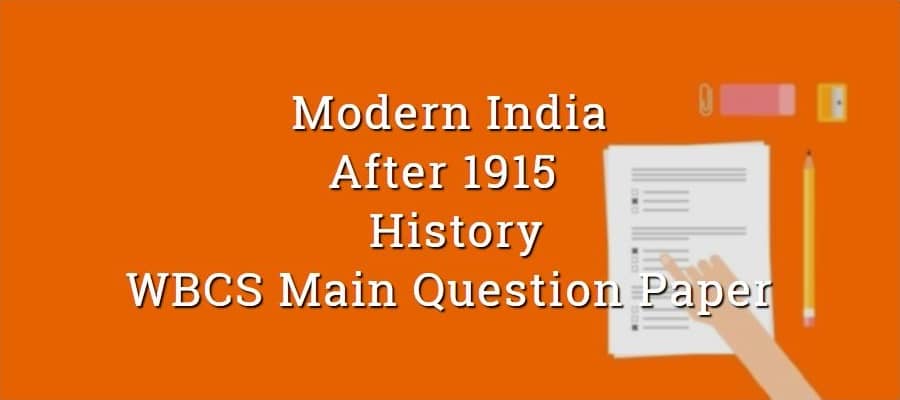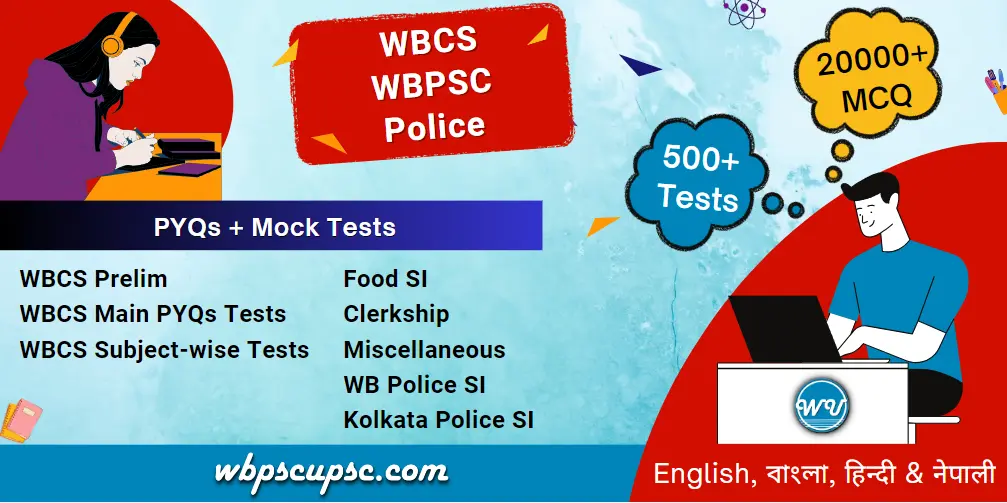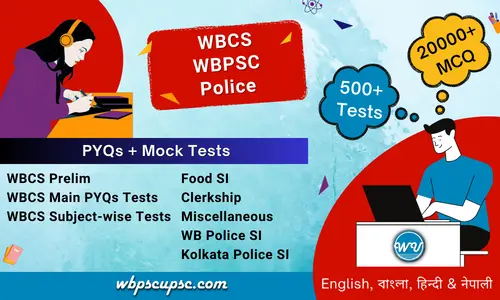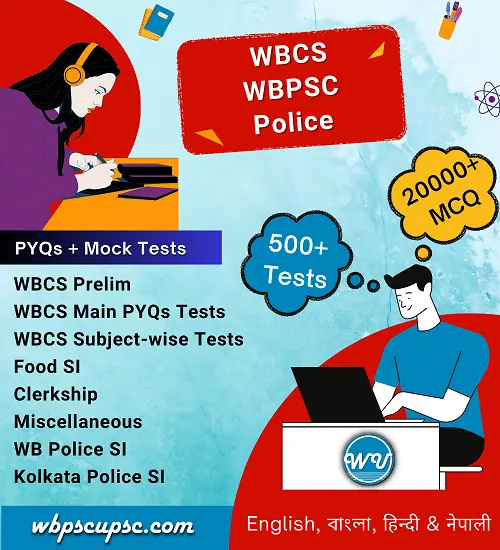(C) M. A. Jinnah
(C) M. A. Jinnah
(D) C. R. Das
(A) C. R. Das
(C) M. M. Malvya
(B) E. V. Ramaswamy
(C) B. R. Ambedkar
(A) M. M. Malaviya
(B) M. A. Jinnah
(C) INC-League demand for elected majority members elected in all legislative bodies
(D) League undertook to struggle against Colonial rule.
(A) C. R. Das
(C) M. M. Malvya
(C) M. M. Malvya
(D) C. R. Das
(C) Govt. of India Act, 1935
(A) Khilafat was Movement overwhelmingly urban in its character, but Civil Disobedience Movement was rural.
(B) Considerable working class activity was seen in the first but not in the latter.
(A) Any talks on devolution of power was useless without Congress participation.
(B) Congress’s supporters among the industrial and mercantile lobby advised an end to the mass movement.
(C) British policy of repression was having its toll on the peasants participating in the movement.
(B) M.A. Jinnah
(B) divide Hindus and Muslims.
(C) ensure an official majority in all circumstances.
(D) allow representation of all religious minorities.
(C) S.P. Mukherjee
(C) F. J. Manekshaw
(D) R.D. Katari
(B) C.R. Das
(C) M. N. Roy
(D) N.D. Majumdar
66. Apart from the Quit India Movement, which started on 9th August 1942,whatother sensational activity of the freedom fighters took place on that date in 1925?
(C) U.S.A.
WBCS Main Question Paper – 2019
(A) Jawaharlal Nehru
(B) V. V. Gin
(C) Lala Lajpat Rai
(D) N. M Joshi
(A) More Representations
(B) Separate Electorate
(C) Embracing the Buddhism
(D) Organized Movement
(Ä) Bhagat Singh
(B) Ram Prasad Bismil
(C) Chandra Sekhar Azad
(D) Jogesh Chandra Chatterji
(A) The country was sinking into a civil war
(B) The congress leaders felt that partition was a lesser evil than a civil war
(C) The congress leaders succumbed to the temptation of power and struck a deal with the British
(D) The interim Govt had become an arena of struggle
126. The Congress decided to raise a
Swaraj Fund of one crore rupees for:
(A) Organizing the Non-Co-operation Movement
(B) Memorial of Bal Gangadhar Tilak
(C) Building the headquarters of the Congress
(D) Supporting the families of the political workers
(A) Mrs. Annie Besant
(B) R.N. Mudhokar
(C) Ambika Charan Majumdar
(D) Madan Mohan Malyviya
130.
Who killed Michael O’ Dyer, the Governor of Punjab, who had ordered the brutal firing on the innocent people at Jahariwala Bag?
(A) Madan Lai Dhingra
(B) Sardar Udham Singh
(C) Sohan Singh Bhakra
(D) Kanaj Lai Duit
(A) Mahadev Desai
(B) G.D. Birla
(C) Amrit Lal Thakkar
(D) B.R. Ambedkar
(A) Gopal Krishna Gokhale
(B) Bal Gangadhar Tilak
(C) Pheroze Shah Mehta
(D) C.R. Das
(A) The Indian Council Act 1892
(B) Act of 1909
(C) The Government of India Act, 1919
(D) The Government of India Act, 1935
(A) Lucknow Pact
(B) Montagu Declaration
C) Election of Mrs. Annie Besant as President of the INC (1917)
(D) Both (A) & (C)
(A) opening the temples to the low caste Hindus.
(B) fighting against the exploitation by the Landlords.
(C) removal of Press restrictions.
(D) democratization of the administration of Travancore State.
(A) Jawaharlal Nehru
(B) Dadabhai Naorojl
(C) Abul Kalam Azad
(D) Gopal Krishna Gokhale
(A) Yugantor
(B) Anushilan Samiti
(C) Bharat Mata Society
(D) Indian Republican Army
143. The Nehru Committee Report got a decent burial at the hands of the Congress at the Session of the I.N.C.
(1929)
(A) Calcutta
(B) Madras
(C) Lahore
(D) Bombay
(A) Subhas Chandra Basu
(B) Jawaharlal Nehru
(C) Thakkar Bapa
(D) Mahatma Gandhi
(A) Bhai Parmanand
(B) Dr. B.R. Ambedkar
(C) M.G. Ranade
(D) Keshab Chandra Sen
(A) V.D. Savarkar
(B) Bhai Parmanand
(C) Dr. Shyama Prasad Mukherjee
(D) M.R. Jayakar
(A) Raja Mahendra Pratap
(B) Kunwar Singh
(C) Chhatrapati Sahu
(D) Raja Ripudaman Singh
(A) Swadeshi Movement
(B) Revolutionary Movement
(C) Home Rule Movement
(D) His imprisonment in 1908
(A) Champaran
(B) Khera
(C) Ahmedabad Mill Strike
(D) Anti Rowlatt Act Agitation
152.
A senior congress leader, who held that the Quit India Movement was misguided and detrimental to India’s long term interests, was
(A) Tej bahadur Sapru
(B) Jayaprakash Narayan
(C) C. Rajagopalachari
(D) J. B. Knpalani
162. The I. N. C. became both ‘Indian’ and ‘National’ in reality as well as in rare, at the
(A) Surat Session (1907)
(B) Calcutta Session (1906)
(C) Lucknow Session (1916)
(D) Lahore Session (1929)
166. Match the epithets of the following National Leaders
(a) B G Tilak(i) Lokmanya
(b) Andrews(ii) Dinabandhu
(C) Madan Mohan(iii) Mahamanya
Malviya
(d) Laja Lajpai Rai(iv) Punjab Kesari
(a) (b) (c) (d)
(A) (i) (ii) (iii) (iv)
(B) (ii) (i) (iii) (iv)
(C) (iii) (ii) (i) (iv)
(D) (iv) (iii) (ii) (i)
(A) The I. N. C. and the Muslim League both thought of starting a passive Resistance movement.
(B) The Home Rule campaign virtually ousted the moderates from the political field.
(C) The I. N. C. became the ‘Congress of Tilak and Besant
(D) The movement generated a cultural awakening in India.
(A) Murder of Saunders
(B) Throwing of bombs in the Assembly at Delhi
(C) Lahore Conspiracy case
(D) Meerut Conspiracy case
(A) Motilal Nehru
(B) Jawaharlal Nehru
(C) Srinivas Ayengar
(D) Subhas Chandra Bose
171. The famous ‘Purna Swaraj Declaration’, which says: “We hold it to be a crime against man and God to submit any longer to a rule that has caused this fourfold disaster to our country”, was prepared by
(A) Jawaharlal Nehru
(B) M K. Gandhi
(C) Motilal Nehru
(D) All of the above
(A) The I.N.C. agreed to join the Second Round Table Conference.
(B) For the first time the I.N.C. was treated on a footing of equality as a political opponent.
(C) Gandhi, the ‘half naked Fakir’, ascended the staircase of the Viceregal Lodge.
(D) The I.N.C. gained a status and authority to speak for political India.
173. Opposition to the Gandhi-Irwin pact was mainly
(A) because of the execution of Bhagat Singh, Sukh Dev and Raj Guru.
(B) because the I.N.C. reneged the Purna Swarajya pledge.
(C) because of suspension of the Civil Disobedience Movement.
(D) because the Pact was a self-delusion.
174. After the Gaya Session of the I.N.C. in December 1922 a
new party was formed by Motilal Nehru and C.R. Das. Its name was
(A) National Liberal Party
(B) The Congress Khilafat SwarajyaParty
(C) Swarajya Party
(D) Swarajya Congress Party
175. The
Meerut Conspiracy Case, in which 27 accused persons were defended by Jawaharlal Nehru and K.N. Katju, related to the members of the
(A) Ghadar Party
(B) Hindu Mahasabha
(C) Indian National Congress
(D) Communist Party of India
(A) Communal Problem
(B) Federal Structure
(C) Demand for Purna Swarajya
(D) Representation of Depressed Classes
(A) Pandit Ramprasad Bismil
(B) Roshan Lal
(C) Ashfaqulla Khan
(D) Surya Sen
(A) Surya Sen
(B) Chandra Dutta
(C) Vidhan Ghosh
(D) Jatin Das
(A) Surya Sen
(B) Bhagat Singh
(C) Batokeshwar Dutt
(D) Chapekar brothers
180.
Who murdered Sunders, Assistant Superintendent of Police, Lahore, for assaulting Lala Lajpat Rai?
(A) Bhagat Singh
(B) Batukeswar Dutt
(C) Sukh Dev
(D) Raj Guru
(8th Apr 1929)
(A) After the murders of Sanders at Lahore, the people were suffering terribly at the hands of the Police.
(B) A feeling had slowly gained around that the people had to suffer the consequences of the crimes committed by Bhagat Singh, etc. to remove such a feeling H.S.R.A. decided to send two members to commit a crime and then to court arrest.
(C) To create a sensation all over India in order to remove political lethargy
(D) All of the above
(A) fifty six
(B) sixty three
(C) seventy two
(D) eighty one
(A) 1936
(B) 1937
(C) 1938
(D) 1939
184. What was the fundamental difference between Subhas Chandra Basu and Gandhi-Nehru group, which led to the defeat of Gandhiji’s candidate for the Presidentship of the I.N.C.?
(A) Gandhiji had a personal dislike for Basu.
(B) Basu had radical and socialist ideas.
(C) Basu wanted to exploit the war between Germany and Britain to India’s advantage and said: “England’s necessity is India’s opportunity”
(D) Insinuations made by Basu against Gandhiji that he was not keen on carrying on the National Struggle.
185. The Tripuri Session of the I.N.C. (March, 1939) was a historic event on account of
(A) the victory of Subhas Chandra Basu as President of I.N.C. against Gandhiji’s nominee, Pattabhi Sitaramayya.
(B) the resignation of the entire Working Committee except Subhas Chandra Basu and his brother Sarat Chandra Basu.
(C) the resolution to frame a Constitution of free India.
(D) rejection of the British Foreign Policy by the I.N.C
(A) 1939
(B) 1938
(C) 1940
(D) 1941
(1937)
(A) Learning through activity
(B) Learning through productivity
(C) Earning and learning
(D) Learning and spinning
(a) August OfferI. August 9-11,1942
(b) Arrival ofII. July 14, 1942
Cripps Mission
(c) Quit IndiaIll. March 23, 1942
Resolution
(d) The Great AugustIV. August 8, 1940
Uprising
(a) (b) (c) (d)
(A) IVIIIIII
(B) IIIIIIIV
(C) IVIIIIII
(D) IVIIIIII
(A) Lal, Bal, Pal, Subhas
(B) Surya, Chandra,Jatin, Bhagat
(C) Gandhi, Azad, Nehru, Subhas
(D) Ganga, Yamuna, Narmada, Kaveri
(A) Imphal
(B) Kohima
(C) Singapore
(D) Rangoon
(A) February 20, 1947
(B) August 16, 1946
(C) March7, 1947
(D) December 9, 1946
192. Lord Mountbatten’s Declaration on the Freedom of India and its partition is known as
(A) The August Plan
(B) The June 3rd Plan
(C) The June 2nd Plan
(D) The Partition Plan
(a) Dr. Rajendra PrasadI. The Nations Voice
(b) Abul Kalam AzadII. India Divided
(c) V D. SavarkarIII. India Wins Freedom
(d) C RajagopalachariIV. Indian War of
Independence
(a) (b) (c) (d)
(A) IIIIIIVI
(B) IIIIlIIV
(C)IIIIIIIV
(D)IIIIIIIV
195. Certain movements of the early twentieth century described as “Movements from below” were
(A) Caste movements
(B) Revolutionary movements
(C) Peasant and tribal movements
(D) Socio-religious movements
196. Match the authors and the work:
(a) Sceptred FluteI. M K. Gandhi
(b) SavitriII. Sarojini Naidu
(c) India and the worldIII. Aurobindo Ghosh
(d) Conquest of SelfIV. Jawaharlal Nehru
(a) (b) (c) (d)
(A) IIlIllIV
(B) IV IIIIlI
(C) IlIllIVI
(D) IlIIVIII
197. What approximately was the
number of Princely States which legally became Independent at the lapse of British paramountcy on August 15, 1947
(A) 300
(B) 600
(C) 150
(D) 700
200. A Muslim organization, which proposed during the First World War that Muslims should participate and try to reach an accord with the Congress, was
(A) Muslim League
(B) Ahmadiya Movement
(C) Ehrar League
(D) Deoband Movement
WBCS Main Question Paper – 2018
a) 1917
b) 1916
c) 1919
d) 1920
a) Sardar Vallabhbhai Patel
b) B R Ambedkar
c) Dr. Rajendra Prasad
d) M K Gandhi
56.
Tebhaga Movement was launched by Bengal Provincial Kisan Sabha to force implementation of the recommendations of ___ commissions through mass struggle.
a) Fowler Commission
b) Frazer Commission
c) Sapru Commission
d) Floud Commission
a) 1940
b) 1941
c) 1942
d) 1943
a) Cripps Mission
b) Cabinet Mission Plan
c) Simon Commission Report
d) Wavell Plan
a) Lord Mount Batten
b) Lord Irwin
c) Lord Willingdon
d) Lord Linlithgow
a) 50% reduction in land revenue.
b) abolition of salt tax
c) impose customs duty on foreign cloth to provide textile protection.
d) All of the above
61. Non Co-operation movement was launched on the issues of:
i) Remedy of Punjab wrong
ii) Remedy of Khilafat wrong
iii) Amendment of Rowlatt Act
iv) Attainment of Swaraj
a) (i), (ii)
b) (i), (iii)
c) (i), (iii), (iv)
d) (i), (ii), (iv)
a) 1915, Bombay
b) 1917, Calcutta
c) 1924, Belgaum
d) 1928, Calcutta
a) Rowlatt Satyagraha
b) Khilafat Movement
c) Non Co-operation Movement
d) Champaran Satyagraha
(1905)
a) Shyamji Krishnavarma
b) Madam Vikhaji Kama
c) Lala Hardayal
d) Pandurang Kankhoje
66.
Who played a prominent role in smuggling arms needed for the deadly attack on Bengal Governor Sir John Anderson at Lebong Race Course, Darjeeling?
(9th May, 1934)
a) Shanti Ghosh
b) Suniti Chowdhury
c) Vina Das
d) Ujjwala Majumdar
a) Nanibala Devi
b) Dukoribala Debi
c) Kalpana Dutta
d) Bina Das
(1933)
a) Sir Muhammad Iqbal
b) Faziul Huq
c) Muhammad Ali Jinnah
d) Chowdhury Rahamat Ali
a) Muhammad Iqbal
b) Hasrat Mohani
c) Josh Molihabadi
d) Bismil Azimabadi
a) Chander Menon
b) C N Mudaliar
c) K Ramakrishna Pillai
d) E V Ramaswami Naicker
(Malabar district)
a) 1931
b) 1929
c) 1924
d) 1930
81. All India Conference of the Depressed classes was formed in
a) 1920
b) 1926
c) 1928
d) 1930
83.
Mahad Satyagraha constituted an important milestone in B. R. Ambedkar’ s political career. When did it take place?
a) 1920
b) 1926
c) 1927
d) 1930
a) Latika Ghosh
b) Urmila Devi
c) Sarojini Naidu
d) Margaret Cousins
87. Sarojini Naidu founded the Women’s organization named as
a) Nazi Satyagraha Samity
b) Mahila Rashtriya Sangha
c) Rashtriya Stree Sangha
d) Mahila Parisad
89.
Franchise for women were slowly introduced ____ were the first provinces to extend franchise to women.
(1919)
a) Bombay
b) Madras
c) Bengal
d) Both (a) and (b)
(Madras Legislative Council, 1927)
a) Basanti Devi
b) Urmila Devi
c) Muthulaxmi Reddy
d) Krishnabai Ram
a) 1927
b) 1928
c) 1929
d) 1942
a) Gadar revolutionaries
b) Emigre revolutionaries
c) Muhajirs
d) Hindu Radicals
(1925)
a) Chander Menon
b) E V Ramaswami Naicker
c) C N Mudalier
d) K Ramashaudran Pillai
a) Local Self Government
b) Education
c) Land Revenue Administration
d) Public Works
WBCS Main Question Paper – 2017
(A) Nationalist historiography
(B) Marxist historiography
(C) Subaltern historiography
(D) Imperialist historiography
(A) Indian Council Act of 1892
(B) Indian Council Act of 1909
(C) Govt. of India Act of 1919
(D) Govt. of India Act of 1935
71. In 1934,
Mahatma Gandhi withdrew himself from all political activities and made a country-wide tour covering a distance of 12504 miles. This tour is known as
(A) Jan Jagaran Yatra
(B) Harijan Yatra
(C) Samaj Samta Yatra
(D) Swaraj Yatra
(A) February 20,1947
(B) August 16,1946
(C) March 07,1947
(D) December 09,1946
73. On August 11,1947, who told the Constituent Assembly of Pakistan — “You may belong to any religion or caste or creed – that has nothing to do with the business of state” ?
(A) The Nawab of Junagadh
(B) The Nizam of Hyderabad
(C) Mohammad Ali Jinnah
(D) Liyaqat Ali Khan
(A) 05
(B) 06
(C) 07
(D) 08
(A) Blue Shirts
(B) Green Shirts
(C) Red Shirts
(D) Pathan Shirts
76. Who
wrote to the Governor from prison: “The individual must die so that the nation may live. Today I must die so that Indian may win Freedom and glory.” ?
(29 Nov 1940)
(A) Jatin Das
(B) Bhagat Singh
(C) Subhas Bose
(D) Ram Prasad Bismil
(A) The June 3rd Plan
(B) The June 2nd Plan
(C) The August Plan
(D) The Partition Plan
79. By whom was the Lahore Session of the Indian National Congress presided over in 1929, which adopted the
‘Poorna Swaraj’ resolution ?
(A) Motilal Nehru
(B) Subhas Chandra Bose
(C) Jawahar Lal Nehru
(D) Bipin Chandra Pal
(A) Mahatma Gandhi
(B) Jawaharlal Nehru
(C) Sardar Patel
(D) None of the above
83. Which of the following statements about
RIN mutiny is not correct ?
(A) Socialists like Aruna Asaf Ali sympathised with the rebels.
(B) Gandhiji condemned the violence.
(C) Sardar Patel persuaded the ratings to surrender all.
(D) The mutiny started in Calcutta.
(A) The Cripps Mission
(B) Simla Conference
(C) Cabinet Mission Plan
(D) The Ratings Mutiny (RIN mutiny)
85. The worst communal carnage as a result of the Muslim League’s call for
‘Direct Action Day’ took place
(A) Calcutta
(B) Bombay
(C) Dacca
(D) Lahore
(A) Maulana Abul Kalam Azad
(B) Chittaranjan Das
(C) Jawahar lal Nehru
(D) Subhas Chandra Bose
(A) The Hindu Mahasabha
(B) The Communist Party of India
(C) The R.S.S
(D) All of the above
88. The Congress-Khilafat Swarajya Party with C.R. Das as its President was formed in
(A) 1922
(B) 1925
(C) 1926
(D) 1927
(A) Muslim League
(B) Hindu Mahasabha
(C) Sikh League
(D) All of the above
90. The inaugural session of the All-India Trade Union Congress in 1920, was presided over by
(A) Lala Lajpat Rai
(B) Motilal Nehru
(C) Mrs. Annie Besant
(D) Acharya Narendra Dev
(A) March 07,1947
(B) July 07,1947
(C) August 07,1947
(D) August 11, 1947
(A) Bardoli Satyagraha
(B) Champaran Satyagraha
(C) Non-cooperation movement
(D) Salt Satyagraha
93. The open mutiny in the Royal Indian Navy (RIN) took place in
(A) February, 1946
(B) February, 1945
(C) August, 1946
(D) August, 1947
(A) Lahore Resolution (1929)
(B) Karachi Resolution (1930)
(C) Lahore Resolution (1940)
(D) Direct Action Day Resolution
(A) Champaran struggle
(B) Kheda struggle
(C) Rowlatt satyagrah
(D) Both (A) and (B)
96. Which of the following funds was started to finance the Non-cooperation Movement ?
(A) Tilak Swaraj fund
(B) Non-cooperation fund
(C) Non-cooperation-Khilafat fund
(D) None of the above
(A) January 31,1930
(B) January 26,1930
(C) March 12,1930
(D) April 06,1930
98. After the creation of two new provinces of Sind and Orissa through the Govt, of India Act, 1935, the total no. of provinces in British India became
(A) 10
(B) 11
(C) 12
(D) 13
(A) Swadeshi and Boycott Movement, 1905-1908
(B) Non-cooperation Movement, 1921-1922
(C) Civil Disobedience Movement, 1930-1934
(D) Quit India Movement, 1942-1943
WBCS Main Question Paper – 2016
55. Which of the following resolutions of the Muslim League finally and formally proclaimed the Muslims of India as a Nation ?
(A) Karachi Resolution
(B) Lahore Resolution of 1940
(C) Deliverance Day Resolution
(D) Rahmat Ali Resolution
56. Who said about the Govt. of India Act. 1935 : “After all we framed the constitution …… of 1935 because we thought it the best way …….. to hold India to the empire” ?
(A) British Prime Minister Ramsay Macdonald
(B) Winston Churchill
(C) Viceroy Lord Linlithgow
(D) Sir Stafford Cripps
(A) Non-co-operation movement
(B) Bardoli Satyagraha
(C) Civil Disobedience Movement
(D) Quit India Movement
59. Which of the following organizations / persons did not approve of the Quit India Movement ?
(A) Muslim League
(B) Hindu Mahasabha
(C) B. R. Ambedkar
(D) All of the above
60. Which of the following is not correctly matched ?
AuthorBook
(A) Bipan Chandra- Communalism in Modern India
(B) Bipan Chandra – Nationalism and Colonialism in
Modern India
(C) Sumit Sarkar-India’s struggle for
Independence
(D) Sumit Sarkar-Modern India, 1885-1947
67. After the Surat split in 1907 the second split in the Congress took place in 1918 on the issue of-
(A) Lucknow Pact
(B) Election of Mrs. Annie Besant as President of the INC (1917)
(C) Both (A) and (B)
(D) Montague declaration
(A) Ambalal Sarabhai
(B) Jawahar Lal Nehru (Planning Commission President)
(C) Subhas Chandra Bose(INC Precedent)
(D) Dr. Rajendra Prasad
(A) Sir Stafford Cripps
(B) Mr A.V. Alexander
(C) Lord Pethick-Lawrrence
(D) Clement Attlee
(A) 1919 -1922
(B) 1922 – 1924
(C) 1924 – 1927
(D) 1928 – 1932
75. Who described the Quit India movement (1942) as “by far the most serious rebellion since 1857” ?
(A) Viceroy Lord Linlithgow
(B) Franklin Roosevelt
(C) Chiang Kai Shek
(D) Winston Churchill
(A) 1930-Bombay
(B) 1936-Lucknow
(C) 1938 -Calcutta
(D) 1942-Lucknow
(1940-45)
(A) Jawahar Lal Nenru
(B) Abul Kalam Azad
(C) Motilal Nehru
(D) Gopal Krishna Gokhale
(A) Self-respect Movement
(B) Justice Party Movement
(C) Mahar Movement
(D) Sanskrit Movement
(A) Women’s Indian Association
(B) National Council of women in India
(C) Bharat stree Mahamandal
(D) All India Women’s Conference
87. Who was the President of the Indian National Congress when
Shimla Conference was convened by Lord Wavell in June-July, 1945 ?
(A) Maulana Abul Kalam Azad
(B) Sardar Patel
(C) Jawaharlal Nehru
(D) A. K. Fazlul Haq
(A) 1942
(B) 1946
(C) 1947
(D) 1952
(Kerala – 1924)
(A) remove untouchability.
(B) ban the Devdasi Institutions for temple service
(C) force the temple authorities to appoint non Brahmins as priests.
(D) open the temples for the entry of the lower castes (avarnas).
(A) Sarala Debi Choudhurani
(B) Sarojini Naidu
(C) Annie Beasant
(D) Basanti Devi
95. The historic Lucknow session (1916) of the I.N.C was presided over by-
(A) Ambika Charan Mozumdar
(B) R.N. Mudhokar
(C) Madan Mohan Malaviya
(D) Rasbehari Bose
96. Which of the following movements was started by Swami Sahajanand Saraswati in Bihar ?
(1933-39)
(A) Zamidari Movement
(B) Socialist Movement
(C) Kisan Sabha Movement
(D) Labour Movement
99. Which of the following was perhaps the most widespread, most intense and most organized peasant movement in the history of colonial India ?
(A) Tebhaga Movement
(B) Telangana Movement
(C) Indigo Movement
(D) Deccan Riots
(A) Civil Disobedience Movement
(B) Quit India Movement
(C) Both (A) and (B)
(D) RIN Mutiny
105. Which one of the following periods of trade union movement in India witnessed growing influence of communist ideology on trade unionism for the first time ?
(A) 1918-1924
(B) 1924-1934
(C) 1934-1939
(D) 1939-1945
(A) 1922
(B) 1927
(C) 1930
(D) 1932
(A) Winston Churchil
(B) Viceroy Lord Wavell
(C) Lord Mountbatten
(D) Clement Attlee
115. At the time of which of the following events / movements Jawaharlal Nehru admitted that : “Never before in history had such unified sentiments been manifested by various divergent sections of the population” ?
(A) Quit India Movement
(B) Imphal campaign of the INA
(C) INA Trial
(D) RIN mutiny
116. Which of the following movements were ‘temple entry’ movement organized in early 20th century ?
(A) Vaikkam Satyagraha 1924-25
(B) Guruvayur Satyagraha (1931-33) in Malabar
(C) Munshiganj Kali temple Satyagraha in Bengal (1929)
(D) All of the above
120. In 1940 January, in his letter to C. F. Andrews, who was described by Gandhiji as “my son”- but a “spoilt child of the family” ?
(A) Jawaharlal Nehru
(B) Minoo Masani
(C) Muhammad Ali Jinnah
(D) Subhas Chandra Bose
(i) There was a discernible absence of Hindu-Muslim unity.
(ii) The movement received a massive business support.
(iii) There was large scale women’s participation
(iv) From September, 1930 onwards the movement began to decline.
Choose the answer from codes given below :
(A) (i) and (ii)
(B) (ii) and (iv)
(C) (ii) and (iii)
(D) All of the above
(A) August offer
(B) Wavell
(C) Rajaji formula
(D) 3rd June Plan
(A) draft recommendations of the Washington International Labour Conference
(B) economic depression.
(C) the General awakening following the First World War
(D) the efforts of the Indian National Congress.
WBCS Main Question Paper – 2015
101. Subhas Chandra Bose fought the presidential election in 1939 on the ground that
(A) He did not like the nomination of Sitaramayya
(B) He pleaded for elections instead of nominations
(C) He was opposed to Gandhiji
(D) He favored an aggressive policy which was opposed by the Congress Leaders
103. The lower castes tried to assert themselves by borrowing and imitating customs and manners of the upper castes. This was termed as Sanskritisation by
(A) M. K. Gandhi
(B) Bernard Cohn
(C) B. R. Ambedkar
(D) M. N. Srinivas
104. Who among the following was not a member of the Congress Socialist Party, although he encouraged and blessed its formation ?
(A) Achyuta Patwardhan
(B) Jawaharlal Nehru
(C) Jayaprakash Narayan
(D) Acharya Narendra Dev
105. The Congress president who conducted negotiations with Cripps in 1942 and Wavell at the Simla Conference was
(A) Abul Kalam Azad
(B) Jawahar Lal Nehru
(C) J. B. Kripalani
(D) C. Rajagopalachari
106. Which one of the following adumbrated principles and constitutional provisions which were later incorporated in the Montague-Chelmsford Reforms ?
(A) Nehru Report
(B) Wavell Plan
(C) Lucknow Pact
(D) Poona Pack
(1929)
(A) Labour
(B) Education
(C) Public Health
(D) Reorganisation of Civil Service
(A) Badar-ud-din-Tyabji
(B) Rabindranath Tagore
(C) Abanindranath Tagore
(D) Abul Kalam Azad
(A) Antipartition and Swadeshi Movements – Lord Lansdowne
(B) Factory Act of 1891 – Lord Curzon
(C) Establishment of an agricultural Research Institution at pusa – Lord Minto
(D) Rowlatt Act – Lord Chelmsford
(A) Valentine Chirol
(B) Disrachi
(C) Minto – II
(D) Chelmsford
117. Tamil journal, Kudi Arasu was founded by whom ?
(1925)
(A) Anna Durai
(B) P. Tyagaraja Ehetti
(C) T.M.Nair
(D) E.V. Ramaswamy Periyar
(i) Hindu Mahasabha
(ii) Justice Party
(iii) Muslim League
(iv) Punjab Unionists
Choose the correct answer from the codes given below
(A) ii and iii
(B) i and ii
(C) iv and ii
(D) iii and iv
(A) Formation of the All India Kisan Sabha – 1935
(B) Foundation of the Congress Socialist party – 1934
(C) Foundation of the Forward Block – 1936
(D) Foundation of the Communist Party of India – 1939
(A) Quam
(B) Inquilab
(C) Star of India
(D) Dawn
125. When was the Federation of Indian Chambers of Commerce and Industry (FICCI) founded ?
(A) 1905
(B) 1907
(C) 1917
(D) 1927
126. Who said : ‘This orderly disciplined anarchy should go, and if as a result there is complete lawlessness I would risk it’ ?
(A) Jawaharlal Nehru
(B) Mahatma Gandhi
(C) Rajagopalachari
(D) Ballav Bhai Patel
(A) Jawaharlal Nehru
(B) Abul Kalam Azad
(C) Muhammed Ali
(D) Subhas Bose
(A) Lord Irwin in 1929
(B) Lord Linlithgow in 1940
(C) Gandhi 1930
(D) Subhas Bose in 1941
(A) G. D. Birla
(B) Jamunalal Bajaj
(C) J. R. D. Tata
(D) Walchand Hirachand
130. Who among the following played an important role in the signing of the Gandhi Irwin pact ?
(i) Motilal Nehru
(ii) Tej Bahadur Sapru
(iii) Madanmohan Malaviya
(iv) Jayakar
(v) Chintamani
Select the correct answer from the codes given below :
(A) i and ii
(B) ii and iv
(C) ii and iii
(D) iv and v
133. Which of the following groups did not get separate electorates by the Act of 1935 ?
(A) Anglo-Indians
(B) Indian Christian
(C) Europeans
(D) Depressed Classes
(i) August Declaration
(ii) Lucknow Pact
(iii) Jallianwalla Bagh Massacre
(iv) Khaira Satyagraha
Select the answer from the codes given below ?
(A) iv, ii, iii and i
(B) iii, i, ii and iv
(C) ii, iv, i and iii
(D) ii, i, iv and iii
(i) Champaran Satyagraha
(ii) Launching of the Khilafat Movement
(iii) Reunion of the Congress
(Iv) Nagpur session of the Congress
Choose the correct answer from the codes given below :
(A) iii, i, ii and iv
(B) iii, i , iv and ii
(C) i, iii, iv and ii
(D) i, iv, iii and ii
(1927)
(A) Kranti
(B) Atmashakti
(C) Sarathi
(D) Sandhya
WBCS Main Question Paper – 2014
(A) Dr. B.R. Ambedkar
(B) M.C. Rajah
(C) Jagjiban Ram
(D) Jayaprakash Narayan
(1925)
(A) Aruna Asaf Ali
(B) Sucheta Kripalani
(C) Sarojini Naidu
(D) Vijayalakshmi Pandit
(A) Dandi March
(B) Champaran Movement
(C) Rowlatt Satyagraha
(D) Non-Cooperation Movement
(A) Bhulabhai Desai
(B) Madan Mohan Malaviya
(C) Dr. Saifuddin Kitchlew
(D) Gauesh Vasudev Mavalankar
(A) Singapore
(B) Japan
(C) Then Barma
(D) Then Malaya
(Maulana Hasrat Mohani in 1921)
(A) Bhagat Sing
(B) Hasrat Mohani
(C) S. C. Bose
(D) M. K. Gandhi
(A) Mahatma Gandhi
(B) Baba Ramchandra
(C) Madari pasi
(D) Sardar Ballav Bhai Patel
(A) Lord William Bentinck
(B) Lord Canning
(C) Lord Mountbatten
(D) Chakraborty Raja Gopalachari
(A) To voice the political grievances of the Sikhs
(B) To bring about modernization in the Sikh social customs
(C) To streamline the management of the Gurudwaras or Sikh Shrines
(D) To purge Sikhism of its superstitious accretions and irrational incrustations.
86. Which of the following was not included in the Nehru Committee Report of 1929 ?
(A) India should be given Dominion Status
(B) Declaration of Fundamental Rights was made
(C) Separate Electorate for Muslims was rejected
(D) It proposed a Federal structure for India
87. When was the All-India Kisan Sabha formed ?
(A) 1991
(B) 1920
(C) 1928
(D) 1936
(1921)
(A) Vishva Bharati, Shantiniketan
(B) Aligarh Muslim University
(C) Women’s University, Pune
(D) Benaras Hindu University
89. Who did the Tribune of Lahore refer to in its observation “If ever a man died a hero and martyr to a noble cause, that man was” ?
(A) Bhagat Singh
(B) Jatindra Nath Das
(C) Chandra Sekhar Azad
(D) Surya Sen
(A) Self-respect League
(B) Dravida Kazhagam
(C) Both (A) and (B) above
(D) Depressed Classes League
91. Arrange the following events in chronological order and make the correct choice from the options given below :-
1. Death of Bal Gangadhar Tilak
2. Nagpur session of the Congress
3. The Moplah Uprising
4. The inauguration of Visva Bharati at Santiniketan
(A) 4, 3, 2, 1
(B) 3, 4, 2, 1
(C) 1, 2, 3, 4
(D) 3, 2, 4, 1
92. Both the transfer of power and partition of India were hurried through in how many days :
(A) 94
(B) 86
(C) 72
(D) 68
(A) Jadonang (Naga leader)
(B) Rani Gaidinliu
(C) Alluri Sitaram Raju
(D) Thakkar Bapa
(1928)
(A) The Kheda Satyagraha
(B) The Bardoli Satyagraha
(C) The Salt Satyagraha
(D) The Individual Satyagraha
98. Which is the correct pair ?
(A) Malavya and Jayakar
(B) Vithalbhai and Malavya
(C) Motilal Nehru and Malavya
(D) C. R. Das and Motilal Nehru
100. Who said on Gandhiji’s death “The tiger has gone out of our lives” ?
(A) J. L. Nehru
(B) Rajendra Prasad
(C) S. Radha Krishnan
(D) Bidhan Chandra Roy




